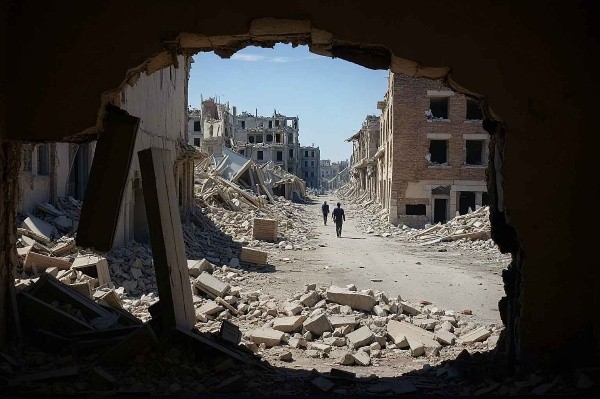Iran’s Unyielding Stance Against Israeli Aggression: A Complex Geopolitical Struggle
In the eyes of many, the Islamic Republic remains the last bastion in the Muslim world against unchecked Israeli aggression
Loading...

Analysts say US push for Gaza post-war phase is ‘unrealistic’ as Israel vows to continue fighting in besieged territory.
A Divergent Path: U.S. Optimism vs. Israel's Military Resolve
The announcement of Hamas leader Yahya Sinwar's death by Israeli forces was swiftly followed by contrasting reactions from the United States and Israel. U.S. officials, including national security adviser Jake Sullivan, heralded the event as a potential turning point, envisioning a "day after" scenario for Gaza's recovery. However, Israeli Prime Minister Benjamin Netanyahu dismissed such optimism, declaring that the conflict was far from over and pledging an extended Israeli military presence in Gaza. This divergence underscores a fundamental lack of consensus on Gaza's post-conflict future.
The Challenges of a Post-War Reality
Analysts argue that U.S. hopes for a new beginning in Gaza are unrealistic, given Israel's ongoing commitment to its military operations. Geopolitical expert H A Hellyer criticized the notion of a "day after" as implausible, pointing out that Israel has shown no intention of withdrawing from Gaza or the occupied territories. The continuation of military engagements in Gaza, alongside operations in the West Bank, East Jerusalem, and beyond, further complicates the prospect of peace and political resolution.
The Elusive Path to Ceasefire
While the U.S. perceives Sinwar's death as removing an obstacle to peace, the path to a ceasefire remains fraught with complexities. Despite Hamas's openness to a ceasefire, Netanyahu's persistent calls for total victory over Hamas present significant hurdles. Experts like Matt Duss emphasize that real progress requires the U.S. to exert pressure on Israel to cease hostilities and plan for a sustainable future, a move the Biden administration has yet to make.
Humanitarian Catastrophe: The Reality on the Ground
The humanitarian crisis in Gaza paints a grim picture of the challenges ahead. A year of conflict has resulted in over 42,500 deaths and widespread destruction. Infrastructure, including hospitals and homes, lies in ruins, and the majority of Gaza's population lacks basic necessities such as clean water and food. The staggering toll on human life and resources raises doubts about the feasibility of any immediate post-war recovery efforts.
Justice and Accountability: An Unfulfilled Promise
The International Criminal Court's pursuit of accountability for potential war crimes has met resistance, highlighting the absence of justice in discussions about Gaza's future. While arrest warrants have been sought for figures like Sinwar, Netanyahu, and Israeli Defense Minister Yoav Gallant, U.S. opposition to ICC investigations complicates the pursuit of justice. Human rights advocates, like Zaha Hassan, stress the need for accountability amidst the ongoing conflict.
An Endless Conflict: Israel's Long-Term Strategy
According to political analysts like Ori Goldberg, Israel appears committed to a "forever war," with no clear political strategy or endgame in sight. The lack of a defined plan from Israel, coupled with the U.S.'s passive stance, perpetuates an unending cycle of violence. Despite international criticism, Israel continues its military actions unabated, underscoring the complexities of achieving peace.
Conclusion:
Despite U.S. aspirations for a peaceful resolution, the reality on the ground, marked by destruction and geopolitical tensions, suggests a long road ahead. Without a significant shift in strategy from both the U.S. and Israel, the prospects for lasting peace in Gaza remain elusive, leaving the region in a perpetual state of conflict.
Editor
In the eyes of many, the Islamic Republic remains the last bastion in the Muslim world against unchecked Israeli aggression
And recent Iraqi history can tell us how.
Here’s why the US and its allies are afraid of real military cooperation between Tehran and Moscow
